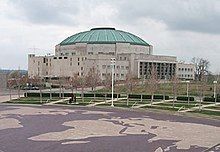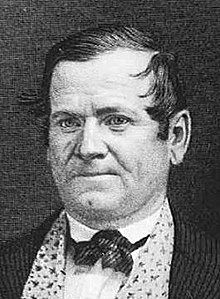Portal:Latter Day Saint movement
|
Welcome to the portal of The Latter Day Saint movement
Introduction The Latter Day Saint movement (also called the LDS movement, LDS restorationist movement, or Smith–Rigdon movement) is the collection of independent church groups that trace their origins to a Christian Restorationist movement founded by Joseph Smith in the late 1820s. Collectively, these churches have over 17 million nominal members, including over 17 million belonging to the Church of Jesus Christ of Latter-day Saints (LDS Church), 250,000 in Community of Christ, and several other denominations with memberships generally ranging in the thousands of members. The predominant theology of the churches in the movement is Mormonism, which sees itself as restoring again on Earth the early Christian church; their members are most commonly known as Mormons. An additional doctrine of the church allows for prophets to receive and publish modern-day revelations. A minority of Latter Day Saint adherents, such as members of Community of Christ, have been influenced by Protestant theologies while maintaining certain distinctive beliefs and practices including continuing revelation, an open canon of scripture and building temples. Other groups include the Remnant Church of Jesus Christ of Latter Day Saints, which supports lineal succession of leadership from Smith's descendants, and the more controversial Fundamentalist Church of Jesus Christ of Latter-Day Saints, which defends the practice of polygamy. One source estimated over 400 denominations have sprung from founder Joseph Smith's original movement. (Full article...) General images -The following are images from various Latter Day Saint movement-related articles on Wikipedia.
Selected article Spencer Woolley Kimball (March 28, 1895 – November 5, 1985) was an American religious leader who was the twelfth president of the Church of Jesus Christ of Latter-day Saints (LDS Church). The grandson of early Latter-day Saint apostle Heber C. Kimball, Kimball was born in Salt Lake City, Utah Territory. He spent most of his early life in Thatcher, Arizona, where his father, Andrew Kimball, farmed and served as the area's stake president. He served an LDS mission in Independence, Missouri, from 1914 to 1916, then worked for various banks in Arizona's Gila Valley as a clerk and bank teller. Kimball later co-founded a business selling bonds and insurance that, after weathering the Great Depression, became highly successful. Kimball served as a stake president in his hometown from 1938 until 1943, when he was called as a member of the Quorum of the Twelve Apostles. (Full article...) Selected location The Auditorium (formerly the RLDS Auditorium) is a house of worship and office building located on the greater Temple Lot in Independence, Missouri. The Auditorium is part of the headquarters complex of Community of Christ which also includes the Independence Temple. (Full article...)
Selected schismatic historiesThe Fundamentalist Church of Jesus Christ of Latter-Day Saints (abbreviated to FLDS Church or FLDS) is a Mormon fundamentalist group whose members practice polygamy. It is variously defined as a cult, a sect or a new religious movement. The FLDS Church has been involved in various illegal activities, including child marriages, child abandonment, sexual assault and human trafficking including child sexual abuse. The sect is not connected to The Church of Jesus Christ of Latter-day Saints (LDS Church), the largest Latter-day Saint denomination. (Full article...) OutlinesRelated portalsKey biographiesJoseph Smith (December 23, 1805 – June 27, 1844) was an American religious leader and the founder of the Latter Day Saint movement whose current followers include members of the Church of Jesus Christ of Latter-day Saints, the Community of Christ, and other Latter Day Saint denominations. The early life of Joseph Smith covers his life from his birth to the end of 1827. Smith was born in Sharon, Vermont, the fifth of eleven children born to Joseph and Lucy Mack Smith. By 1817, Smith's family had moved to the "burned-over district" of western New York, an area repeatedly swept by religious revivals during the Second Great Awakening. Smith family members held divergent views about organized religion, believed in visions and prophecies, and engaged in certain folk religious practices typical of the era. Smith briefly investigated Methodism, but he was generally disillusioned with the churches of his day. (Full article...)
Selected image The Kirtland Temple, dedicated on March 27, 1836, making it the first temple to be built by adherents of the Latter Day Saint movement. Currently owned and operated by the Community of Christ.
Did you know (auto generated)
Selected Anniversaries
Selected quote
TopicsFeatured contentCategoriesWikiProjectsAssociated WikimediaThe following Wikimedia Foundation sister projects provide more on this subject:
Discover Wikipedia using portals | ||||||||||






































